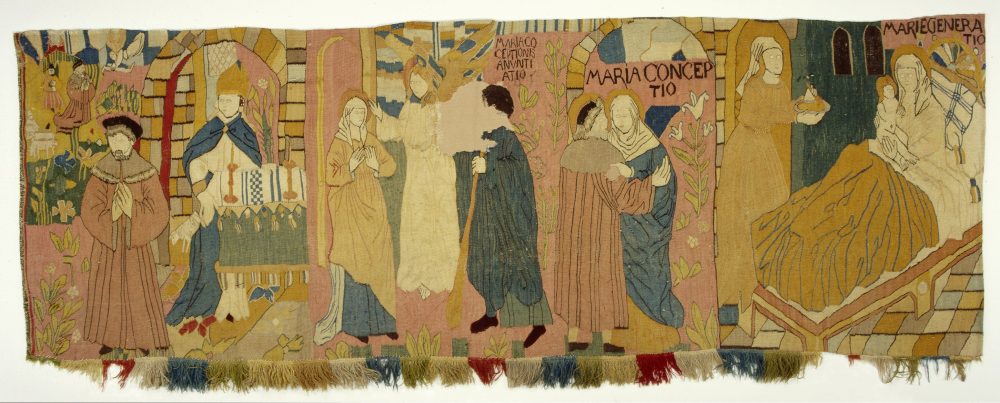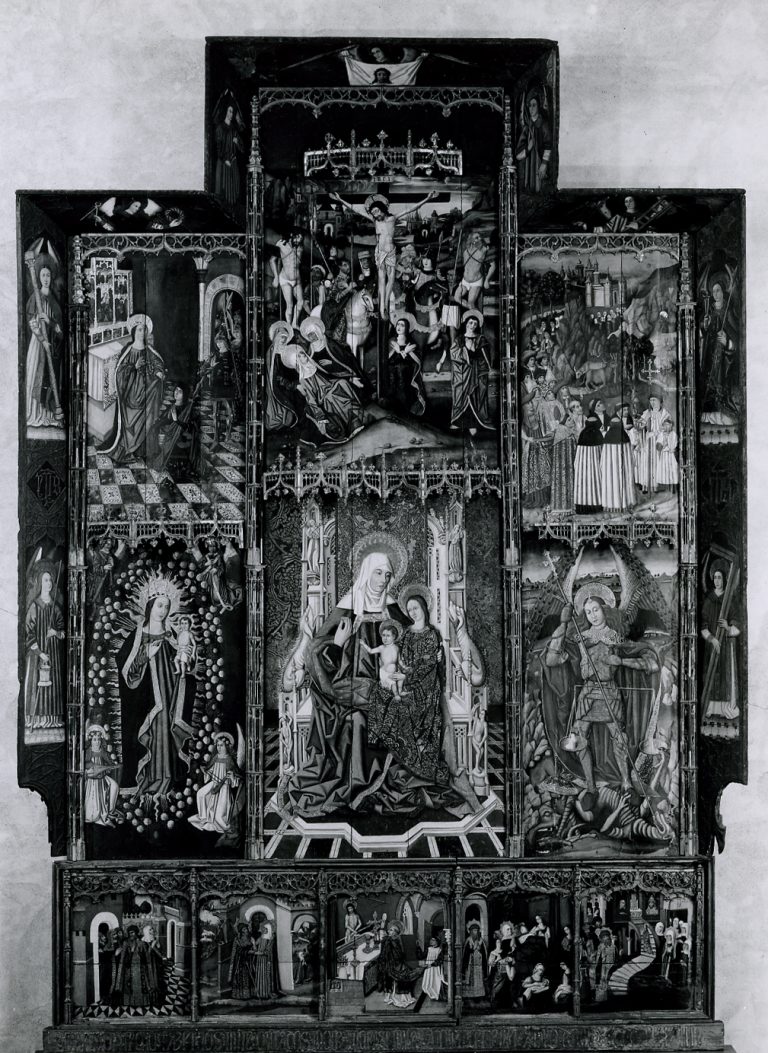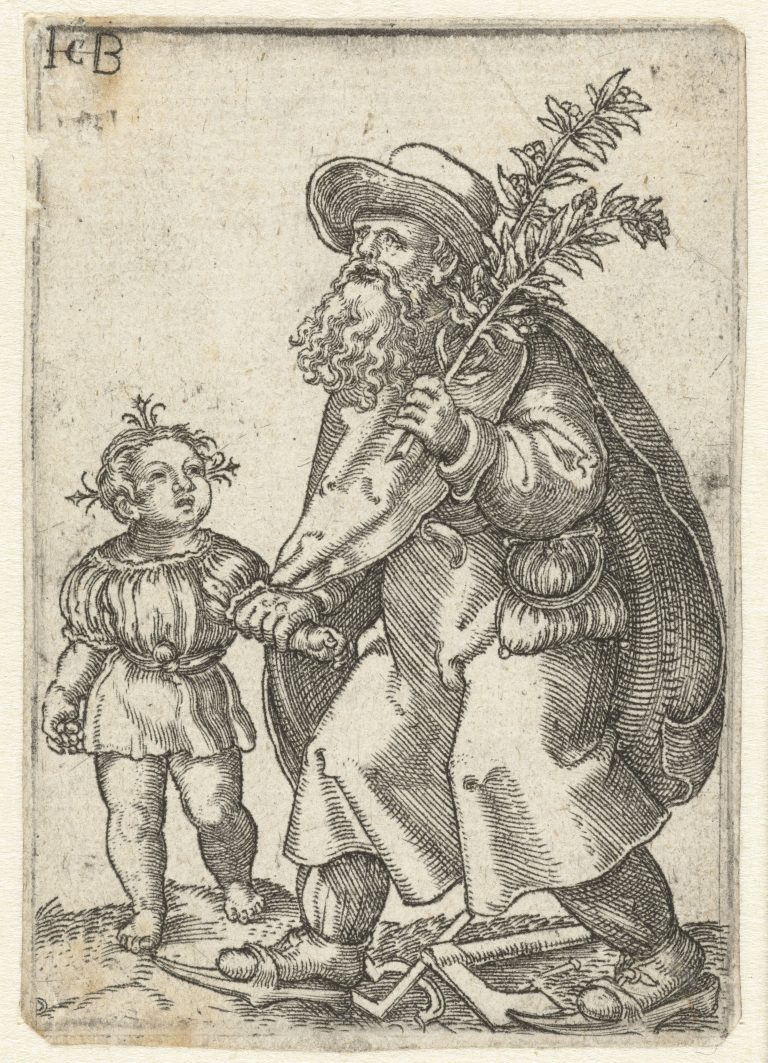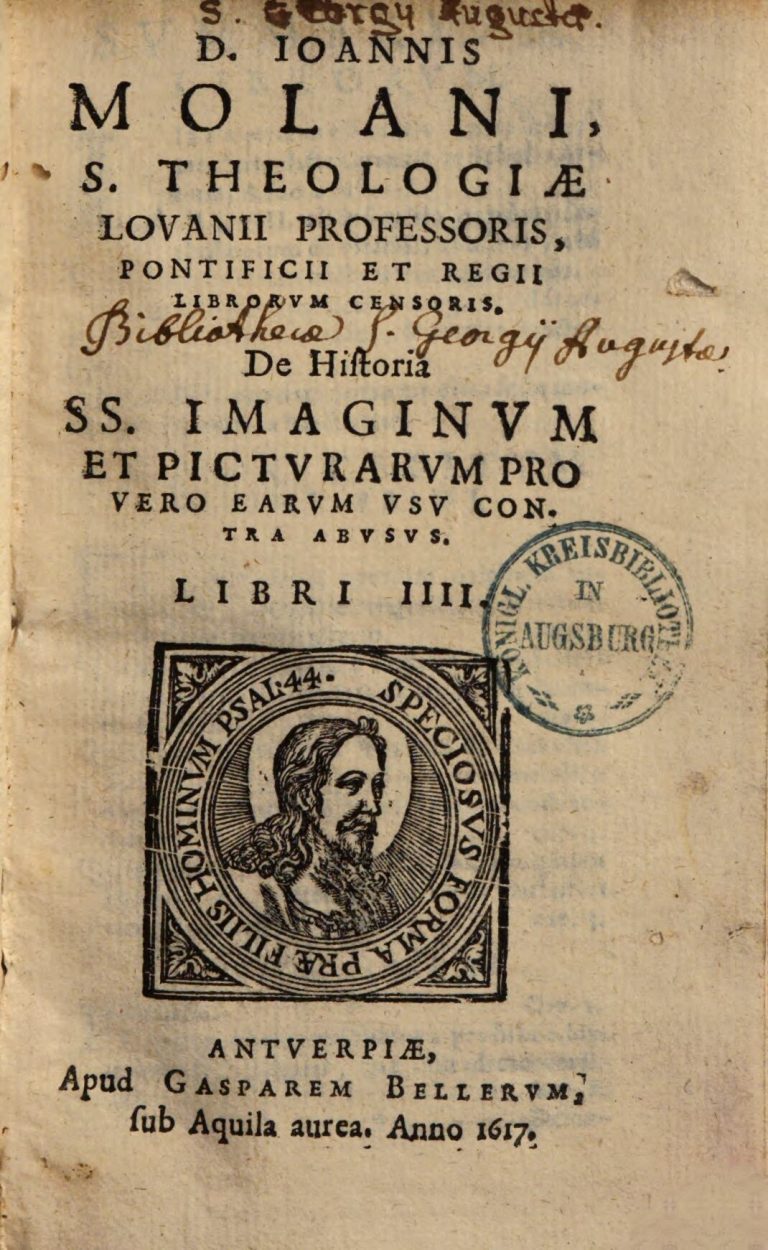
Rijksmuseum Amsterdam, http://hdl.handle.net/10934/RM0001.COLLECT.20703
Book 2 chapter 32 contains a continuation of the matters addressed in the preceding chapters, namely the question of what can be considered to be an error, whether it is dangerous and how to deal with them. This chapter can be considered to be the capstone of this argument in this part of the work, starting with clear errors and then moving on to issues which can be accepted according to the circumstances, now cases that can be accepted without any reservation are discussed. The two examples of iconographies presented in the chapter either derive from apocryphal sources or more popular backgrounds, however, because of their probability they are both approved by Molanus.
The first matter discussed by Molanus consists of a category of paintings, namely those that depict scenes derived from apocryphal sources on the life of the Virgin Mary and the infancy of Christ or accounts of the lives of saints. He argues that even though these images do not base themselves on the Holy Scriptures or writings approved by the Church, many of the elements they depict are often highly probable and can be found in the works of important commentators. For this reason paintings and images of this type should receive the same venerations as other holy images.
“Then there are other paintings relating to the Blessed Mary, Joseph, and Anne and Joachim, which are taken from the apocryphal book, The Nativity of Mary, or the Infancy of the Saviour. However, as Denys the Charterer has remarked, there are many things in this work which, with probability, are believed to be true, since holy men of profound learning, such as Epiphanius and others, mention them and give them as true. Likewise, there are accounts relating to the saints, which must rather be counted with those which possess authority of weights difficult to refute. However, as some of them are read throughout the Church with veneration, it is more than evident that they must furthermore be maintained with the same veneration in images and paintings.”
“Sunt praeterea et aliae picturae de beata Maria, de Ioseph, de Anna et Ioachim, quae desumptae sunt ex libro apocrypho, de ort Mariae, aut infantia Salvatoris et tamen ut Dionysius Carthusianus annotavit, multa sunt in illo libello quae probabiliter vera censentur, quia à viris sanctis et eruditis, ut Epihanio et aliis recitantur et vera seruntur. Sunt item et historiae quaedam Sanctorum, quae potius recenseri debent inter eas quae probabiles sunt aut vero non absimiles, quam inter eas quae certam irrefragabilem aut gravem habent auctoritatem et tamen cum ex eis quaedam cum veneratione in Ecclesia ubique legantur, satis superque manifestum est eadem etiam in picturis et imaginibus venerabiliter relinquanda esse.”






Apocalypse 12 Council of Trent, session XIV.
Molanus 1996, 215.



